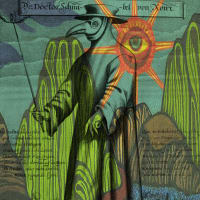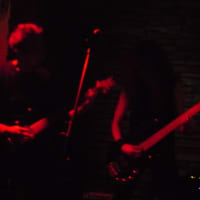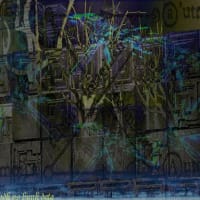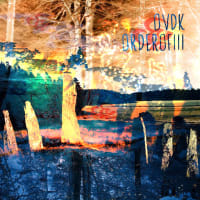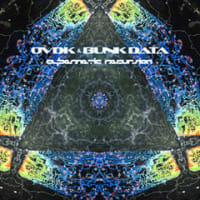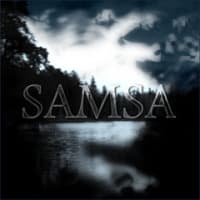
November 12, 1915 – March 25, 1980) (pronounced [ʀɔlɑ̃ baʀt]) was a French literary critic, literary and social theorist, philosopher, and semiotician. Barthes' work extended over many fields and he influenced the development of schools of theory including structuralism, semiotics, existentialism, Marxism and post-structuralism.
Contents
[hide]
[edit] Life
Roland Barthes was born on November 12, 1915 in the town of Cherbourg in Normandy. He was the son of naval officer Louis Barthes, who was killed in a battle in the North Sea before Roland turned one. His mother, Henriette Barthes, and his aunt and grandmother raised him in the French city of Bayonne where he received his first exposure to culture, learning piano from his musically gifted aunt. When he was nine his mother moved to Paris and it was there that he would grow to manhood (though his attachment to his provincial roots would remain strong throughout his life).
Barthes showed great promise as a student and spent the period from 1935 to 1939 at the Sorbonne, earning a licence in classical letters. Unfortunately, he was also plagued by ill health throughout this period, suffering from tuberculosis that often had to be treated in the isolation of sanatoria. His repeated physical breakdowns disrupted his academic career, affecting his studies and his ability to take certain qualifying examinations. However, it also kept him out of military service during World War II, and, while being kept out of the major French universities meant he had to travel a great deal for teaching positions, Barthes later professed an intentional avoidance of major degree-awarding universities throughout his career.
His life from 1939 to 1948 was largely spent obtaining a license in grammar and philology, publishing his first papers, taking part in a little pre-medical study and continuing to struggle with his health. In 1948 he returned to purely academic work, gaining numerous short-term positions at institutes in France, Romania and Egypt. During this time he contributed to the leftist Parisian paper Combat, out of which grew his first full length work Writing Degree Zero (1953). In 1952 Barthes was able to settle at the Centre National de la Recherche Scientifique when he studied lexicology and sociology. During his seven-year period there he began writing bimonthly installments to Les Lettres Nouvelles, a popular series of essays that dismantled myths of popular culture (gathered in the Mythologies collection published in 1957).
Barthes spent the early 60s exploring the fields of semiology and structuralism, chairing various faculty positions around France, and continuing to produce more full-length studies. Many of his works were discursive to traditional academic views of literary theory and specific, renowned figures of literature. His unorthodox thinking led to a conflict with another French thinker, Raymond Picard, who attacked the New Criticism (a label with which he inaccurately identified Barthes) for being obscure and disrespectful to the culture’s literary roots. Barthes' rebuttal in Criticism and Truth (1966) accused the old, bourgeois criticism of being unconcerned with the finer points of language and capable of selective ignorance towards challenging concepts of theories like Marxism.
By the late 1960s Barthes had established a reputation. He traveled to America and Japan, delivering a presentation at Johns Hopkins University, and producing his best known work, the 1967 essay “The Death of the Author”, which, in light of the growing influence of Jacques Derrida's deconstructionist theory, would prove to be a transitional piece investigating the logical ends of structuralist thought. Barthes continued to contribute with Philippe Sollers to the avant-garde literary magazine Tel Quel, which was very much concerned with the kinds of theory being developed in his work. In 1970 Barthes produced what many consider to be his most prodigious work, the dense critical reading of Balzac’s Sarrasine entitled S/Z. Throughout the 70s Barthes continued to develop his literary criticism, pursuing new ideals of textuality and novelistic neutrality through his works.
In 1977 he was elected to a rather lauded position as chair of Sémiologie Littéraire at the Collège de France. Sadly, this came in the same year that his mother died. The loss of the woman who had raised and cared for him was a terrible blow to Barthes. He had often written works of theory on photography, dating back as far as his individual works in Mythologies. His last great work was Camera Lucida. The text, which was a meditation on an old picture of his mother, was half theory of communication through the photographic medium and half act of grief to his mother’s memory. Roland Barthes died less than three years after his mother. On 25 February 1980, after leaving a lunch party held by François Mitterrand (who would be elected president of France the next year), Barthes was struck by a laundry truck while walking home through the streets of Paris. He succumbed to his injuries a month later and died on 25 March.
[edit] Works and ideas
[edit] Early works
Barthes' earliest work was very much a reaction to the trend of existentialist philosophy that was prominent during the 1940s, specifically towards the figurehead of existentialism Jean-Paul Sartre. In his work What Is Literature? (1947) Sartre finds himself to be disenchanted with both established forms of writing, and more experimental avant-garde forms, which he feels alienates readers. Barthes’ response is to try to find what can be considered unique and original in writing. He determines in Writing Degree Zero (1953) that language and style are both matters that appeal to conventions, and are thus not purely creative. Rather, form, or what Barthes calls ‘writing’, the specific way an individual chooses to manipulate conventions of style for a desired effect, is the unique and creative act. One’s form is vulnerable to becoming a convention once it has been made available to the public. This means that being creative is an ongoing process of continual change and reaction. He saw Albert Camus’s The Stranger as an ideal example of this notion for its sincere lack of any embellishment or flair.
In Michelet, a critical look at the work of French historian Jules Michelet, Barthes continues to develop these notions and apply them to broader fields. He explains that Michelet’s views of history and society are obviously flawed, but that in studying his works one should not seek to learn from Michelet’s claims. Rather, one should maintain a critical distance and learn from his errors. Understanding how and why his thinking is flawed will show more about his period of history than his own observations. Similarly, Barthes felt avant-garde writing should be praised for maintaining just such a distance between its audience and its work. By maintaining an obvious artificiality rather than making claims to great subjective truths, avant-garde writers assure their audiences maintain an objective perspective in reading their work. In this sense, Barthes believed that art should be critical and interrogate the world rather than seek to explain it like Michelet would.
[edit] Semiology and myth
Barthes' many monthly contributions that made up Mythologies (1957) would often interrogate pieces of cultural material to expose how bourgeois society used them to assert its values upon others. For instance, portrayal of wine in French society as a robust and healthy habit would be a bourgeois ideal perception contradicted by certain realities (i.e. that wine can be unhealthy and inebriating). He found semiology, the study of signs, useful in these interrogations. Barthes explained that these bourgeois cultural myths were second-order signs, or significations. A picture of a full, dark bottle is a signifier relating to a signified: a fermented, alcoholic beverage - wine. However, the bourgeois take this signified and apply their own emphasis to it, making ‘wine’ a new signifier, this time relating to a new signified: the idea of healthy, robust, relaxing wine. Motivations for such manipulations vary from a desire to sell products to a simple desire to maintain the status quo. These insights brought Barthes very much in line with similar Marxist theory.
In The Fashion System Barthes showed how this adulteration of signs could easily be translated into words. In this work he explained how in the fashion world any word could be loaded with idealistic bourgeois emphasis. Thus, if popular fashion says that a ‘blouse’ is ideal for a certain situation or ensemble, this idea is immediately naturalized and accepted as truth, even though the actual sign could just as easily be interchangeable with ‘skirt’, ‘vest’ or any number of combinations. In the end Barthes' Mythologies became absorbed itself into bourgeois culture, as he found many third parties asking him to comment on a certain cultural phenomenon, being interested in his control over his readership. This turn of events caused him to question the overall utility of demystifying culture for the masses, thinking it might be a fruitless attempt, and drove him deeper in his search for individualistic meaning in art.
[edit] Structuralism and its limits
Contents
[hide]
[edit] Life
Roland Barthes was born on November 12, 1915 in the town of Cherbourg in Normandy. He was the son of naval officer Louis Barthes, who was killed in a battle in the North Sea before Roland turned one. His mother, Henriette Barthes, and his aunt and grandmother raised him in the French city of Bayonne where he received his first exposure to culture, learning piano from his musically gifted aunt. When he was nine his mother moved to Paris and it was there that he would grow to manhood (though his attachment to his provincial roots would remain strong throughout his life).
Barthes showed great promise as a student and spent the period from 1935 to 1939 at the Sorbonne, earning a licence in classical letters. Unfortunately, he was also plagued by ill health throughout this period, suffering from tuberculosis that often had to be treated in the isolation of sanatoria. His repeated physical breakdowns disrupted his academic career, affecting his studies and his ability to take certain qualifying examinations. However, it also kept him out of military service during World War II, and, while being kept out of the major French universities meant he had to travel a great deal for teaching positions, Barthes later professed an intentional avoidance of major degree-awarding universities throughout his career.
His life from 1939 to 1948 was largely spent obtaining a license in grammar and philology, publishing his first papers, taking part in a little pre-medical study and continuing to struggle with his health. In 1948 he returned to purely academic work, gaining numerous short-term positions at institutes in France, Romania and Egypt. During this time he contributed to the leftist Parisian paper Combat, out of which grew his first full length work Writing Degree Zero (1953). In 1952 Barthes was able to settle at the Centre National de la Recherche Scientifique when he studied lexicology and sociology. During his seven-year period there he began writing bimonthly installments to Les Lettres Nouvelles, a popular series of essays that dismantled myths of popular culture (gathered in the Mythologies collection published in 1957).
Barthes spent the early 60s exploring the fields of semiology and structuralism, chairing various faculty positions around France, and continuing to produce more full-length studies. Many of his works were discursive to traditional academic views of literary theory and specific, renowned figures of literature. His unorthodox thinking led to a conflict with another French thinker, Raymond Picard, who attacked the New Criticism (a label with which he inaccurately identified Barthes) for being obscure and disrespectful to the culture’s literary roots. Barthes' rebuttal in Criticism and Truth (1966) accused the old, bourgeois criticism of being unconcerned with the finer points of language and capable of selective ignorance towards challenging concepts of theories like Marxism.
By the late 1960s Barthes had established a reputation. He traveled to America and Japan, delivering a presentation at Johns Hopkins University, and producing his best known work, the 1967 essay “The Death of the Author”, which, in light of the growing influence of Jacques Derrida's deconstructionist theory, would prove to be a transitional piece investigating the logical ends of structuralist thought. Barthes continued to contribute with Philippe Sollers to the avant-garde literary magazine Tel Quel, which was very much concerned with the kinds of theory being developed in his work. In 1970 Barthes produced what many consider to be his most prodigious work, the dense critical reading of Balzac’s Sarrasine entitled S/Z. Throughout the 70s Barthes continued to develop his literary criticism, pursuing new ideals of textuality and novelistic neutrality through his works.
In 1977 he was elected to a rather lauded position as chair of Sémiologie Littéraire at the Collège de France. Sadly, this came in the same year that his mother died. The loss of the woman who had raised and cared for him was a terrible blow to Barthes. He had often written works of theory on photography, dating back as far as his individual works in Mythologies. His last great work was Camera Lucida. The text, which was a meditation on an old picture of his mother, was half theory of communication through the photographic medium and half act of grief to his mother’s memory. Roland Barthes died less than three years after his mother. On 25 February 1980, after leaving a lunch party held by François Mitterrand (who would be elected president of France the next year), Barthes was struck by a laundry truck while walking home through the streets of Paris. He succumbed to his injuries a month later and died on 25 March.
[edit] Works and ideas
[edit] Early works
Barthes' earliest work was very much a reaction to the trend of existentialist philosophy that was prominent during the 1940s, specifically towards the figurehead of existentialism Jean-Paul Sartre. In his work What Is Literature? (1947) Sartre finds himself to be disenchanted with both established forms of writing, and more experimental avant-garde forms, which he feels alienates readers. Barthes’ response is to try to find what can be considered unique and original in writing. He determines in Writing Degree Zero (1953) that language and style are both matters that appeal to conventions, and are thus not purely creative. Rather, form, or what Barthes calls ‘writing’, the specific way an individual chooses to manipulate conventions of style for a desired effect, is the unique and creative act. One’s form is vulnerable to becoming a convention once it has been made available to the public. This means that being creative is an ongoing process of continual change and reaction. He saw Albert Camus’s The Stranger as an ideal example of this notion for its sincere lack of any embellishment or flair.
In Michelet, a critical look at the work of French historian Jules Michelet, Barthes continues to develop these notions and apply them to broader fields. He explains that Michelet’s views of history and society are obviously flawed, but that in studying his works one should not seek to learn from Michelet’s claims. Rather, one should maintain a critical distance and learn from his errors. Understanding how and why his thinking is flawed will show more about his period of history than his own observations. Similarly, Barthes felt avant-garde writing should be praised for maintaining just such a distance between its audience and its work. By maintaining an obvious artificiality rather than making claims to great subjective truths, avant-garde writers assure their audiences maintain an objective perspective in reading their work. In this sense, Barthes believed that art should be critical and interrogate the world rather than seek to explain it like Michelet would.
[edit] Semiology and myth
Barthes' many monthly contributions that made up Mythologies (1957) would often interrogate pieces of cultural material to expose how bourgeois society used them to assert its values upon others. For instance, portrayal of wine in French society as a robust and healthy habit would be a bourgeois ideal perception contradicted by certain realities (i.e. that wine can be unhealthy and inebriating). He found semiology, the study of signs, useful in these interrogations. Barthes explained that these bourgeois cultural myths were second-order signs, or significations. A picture of a full, dark bottle is a signifier relating to a signified: a fermented, alcoholic beverage - wine. However, the bourgeois take this signified and apply their own emphasis to it, making ‘wine’ a new signifier, this time relating to a new signified: the idea of healthy, robust, relaxing wine. Motivations for such manipulations vary from a desire to sell products to a simple desire to maintain the status quo. These insights brought Barthes very much in line with similar Marxist theory.
In The Fashion System Barthes showed how this adulteration of signs could easily be translated into words. In this work he explained how in the fashion world any word could be loaded with idealistic bourgeois emphasis. Thus, if popular fashion says that a ‘blouse’ is ideal for a certain situation or ensemble, this idea is immediately naturalized and accepted as truth, even though the actual sign could just as easily be interchangeable with ‘skirt’, ‘vest’ or any number of combinations. In the end Barthes' Mythologies became absorbed itself into bourgeois culture, as he found many third parties asking him to comment on a certain cultural phenomenon, being interested in his control over his readership. This turn of events caused him to question the overall utility of demystifying culture for the masses, thinking it might be a fruitless attempt, and drove him deeper in his search for individualistic meaning in art.
[edit] Structuralism and its limits










